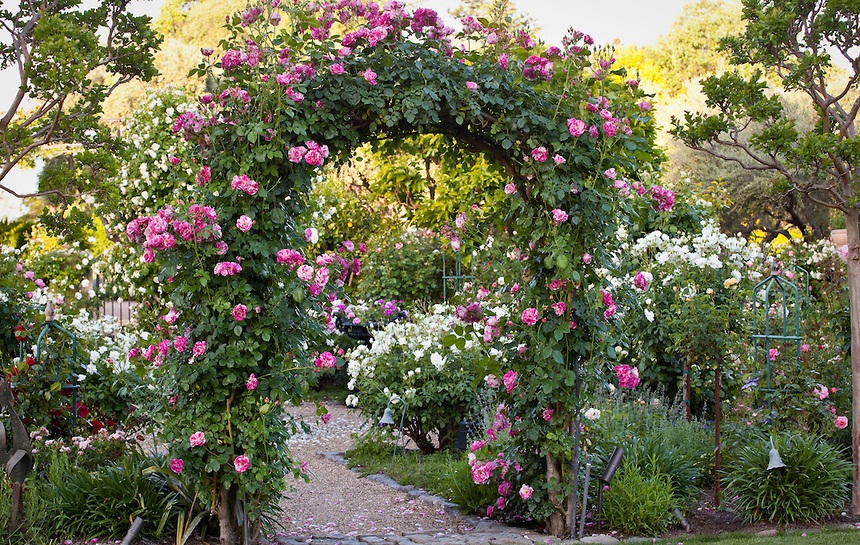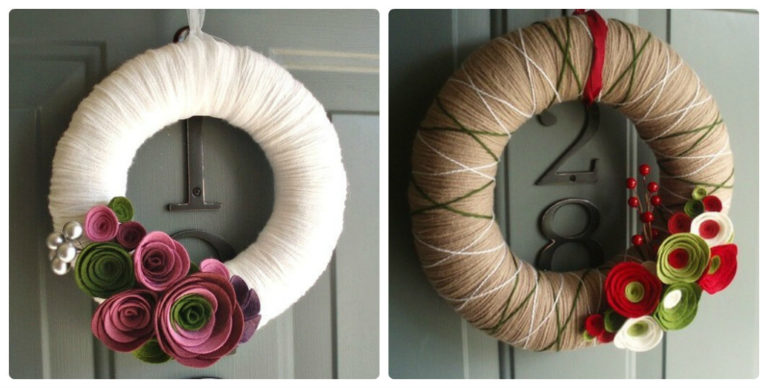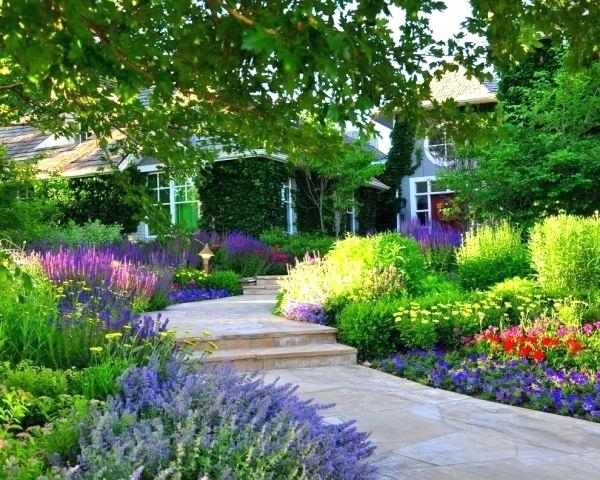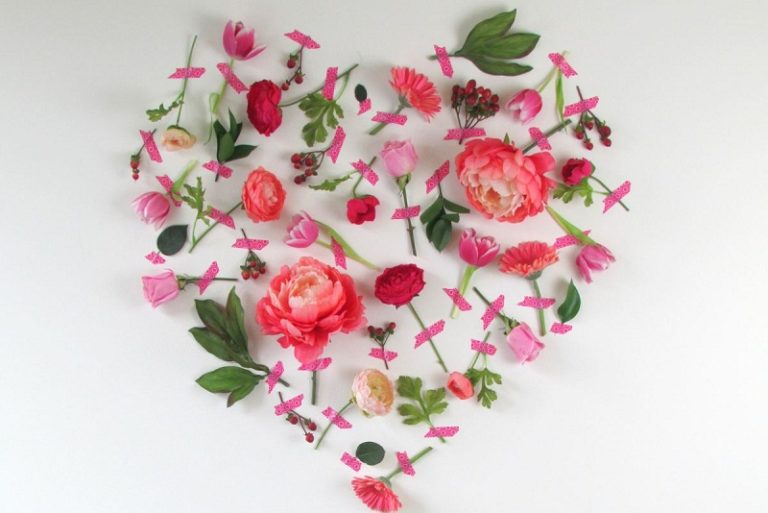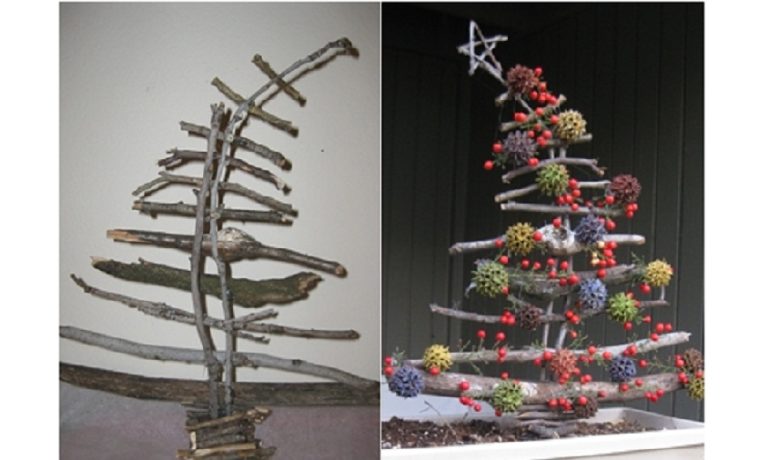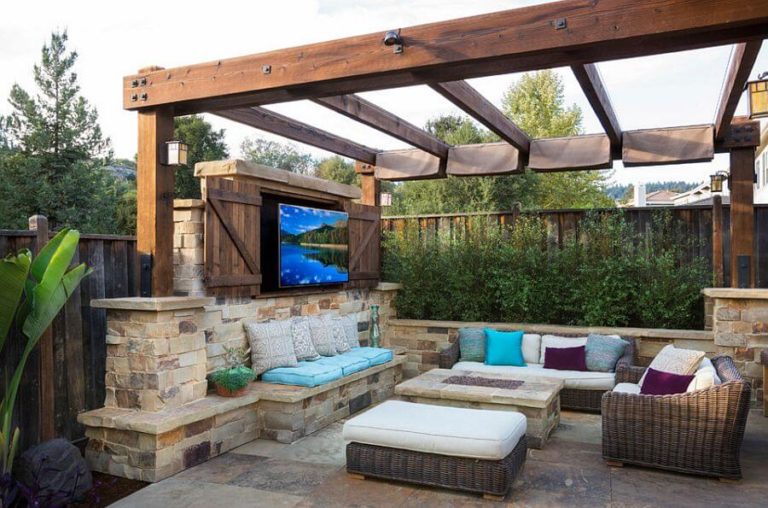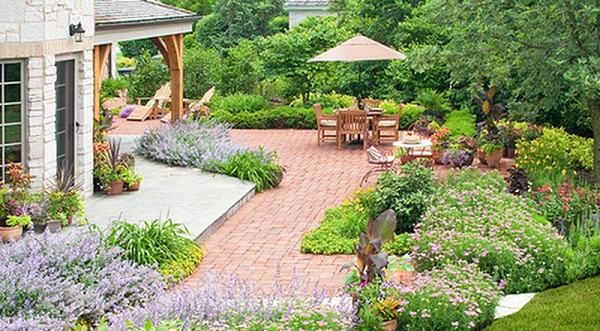Plant support
Many owners of suburban areas grow vegetables, fruits, flowers and ornamental plants. However, the desire to plant more and more vegetable, ornamental plants in a small yard is the dream of every gardener and it is possible to do this with the help of a plant support.
The plant support is a very convenient design for climbing plants. It is used not only for flowers, but also for grapes, cucumbers, peas, beans, raspberries and blackberries. Any support structure can be made based on improvised materials, but you need to remember that any structure must be strong, durable, stable, such that it can withstand the weight of plants and strong winds.
To install a reliable support, you need to bury it deeper or pour the foundation, the width of the structure must be rough enough, otherwise climbing plants will slide down.
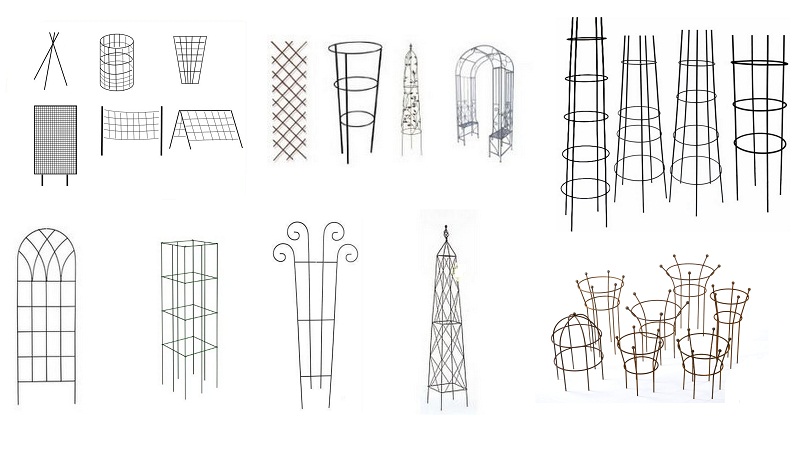
Types of plant supports
Today, there are many varieties of supports for climbing plants. They are used not only for the garden, but also for decorating the yard or even for arranging a home interior. Depending on the needs of the gardener, structures are divided into free-standing modules, wall elements that are attached to walls, fences and stretch ones.

Pole support
This support is based on wood, bamboo – even slats, branches of different thicknesses. It is installed directly in the area of plant growth.
Installation recommendations:
The lower edge of the beam must be sharpened with an ax and treated against decay;
It is best to mount the rail before planting plants so as not to damage the root;
You need to tie up the plants with a rope (twine).
Example 1
To make this type of support more attractive, fasten up to 7 twine laces of the same length at the top of the rail, pull each cord with a stake and fix it in the ground, at a distance of 70-100 cm from the base.
Example 2
It is impractical to build a support for each plant, so you can make structures such as a long wigwam, in which the slats are installed at an angle to each other and connected to each other with soft wire or rope. For structural stability, the slats must be at least 30 cm deep into the ground.
Such a support is used for growing beans, peas, annual climbing flowers.
Ring supports for plants
For the aesthetic design of a personal plot, there are ring supports or columns, which are a set of metal rods installed vertically (in a circle) and connected to a common structure using any round objects (circles, ovals made of any materials, rubber, plastic, metal, wood…). All round objects are fixed with a rope.
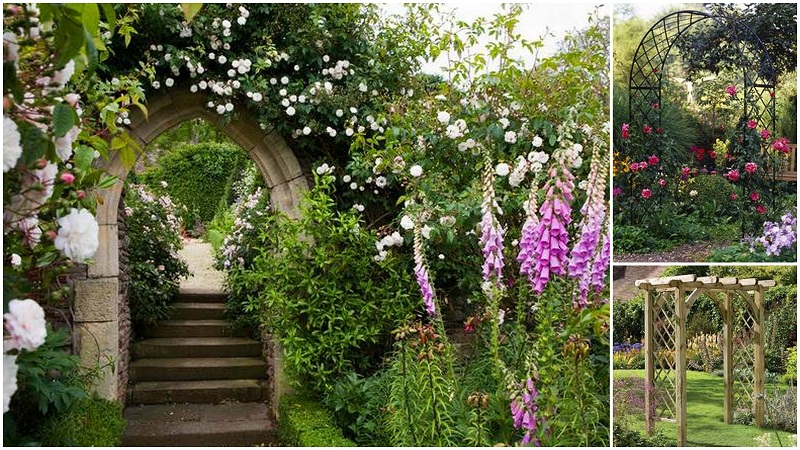
Arches for plants
The purpose of the arches is zoning the site. They allow for a more rational use of the garden area, as the plants rise up the walls of this structure.
Such a support for climbing plants can be made from:
- metal – the metal arch will be strong and durable. You can’t do without a welding machine;
- trees – a wooden arch will be strong, with proper care it will last quite a long time. When installing a wooden arch, it must be firmly fixed and the weight of the plants must be taken into account so that it is stable;
- plastic pipes – low temperatures are contraindicated for this material, so it should winter in the garage;
- stone – a support made of this material is appropriate for a huge garden. It looks beautiful, can stand for centuries.
Such a support is used for grapes, roses, clematis, honeysuckle, kiwi, wisteria….
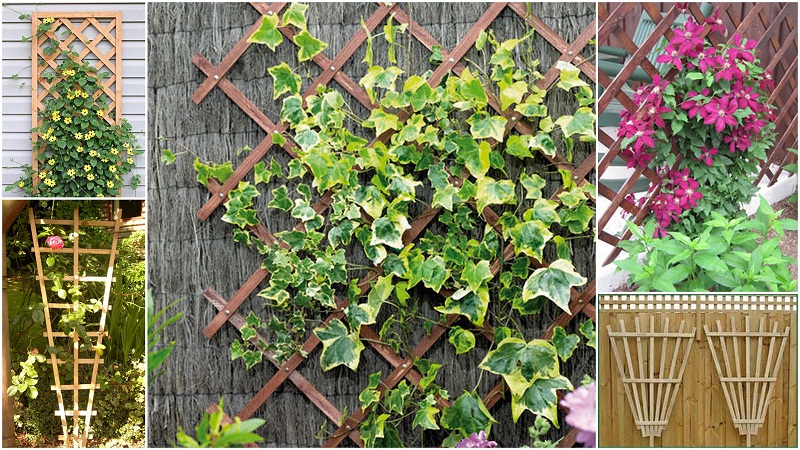
Wall supports for plants
Wall supports are wooden lattices that can be attached to the wall. There are many types of wall supports.
Plant bases are made of thin wooden slats. Wooden slats are laid out at a distance of 10 – 20 cm with a lattice and fastened with screws together at the intersection. Such wooden grilles are attached directly to vertical walls, there must be a distance between the wall and the grille, which will ensure that there is free space between the building and the grille.
Such wall supports are used for ornamental grapes, clematis, honeysuckle, ivy, roses.
Ideas for using stones in the garden, video:
Tension trellis supports
Stretch wallpaper is made from a base and from stretched twine or silicone mesh, fixed with laces and pegs. To make a stretch wallpaper, we need to install and fix the base, 2-4 strong slats; Stuff the slats into the ground, screw hooks or nails to hook the tension material. Stretch the mesh or laces from base to base – our wallpaper support is ready.
Important: If you use wooden slats, they must be treated with anti-decay solutions.
Such stretch trellises are used for cucumbers, peas, beans.
In addition to the above options, other decorative structures can be used as a support for climbing plants, so turn on your imagination and get down to business!

